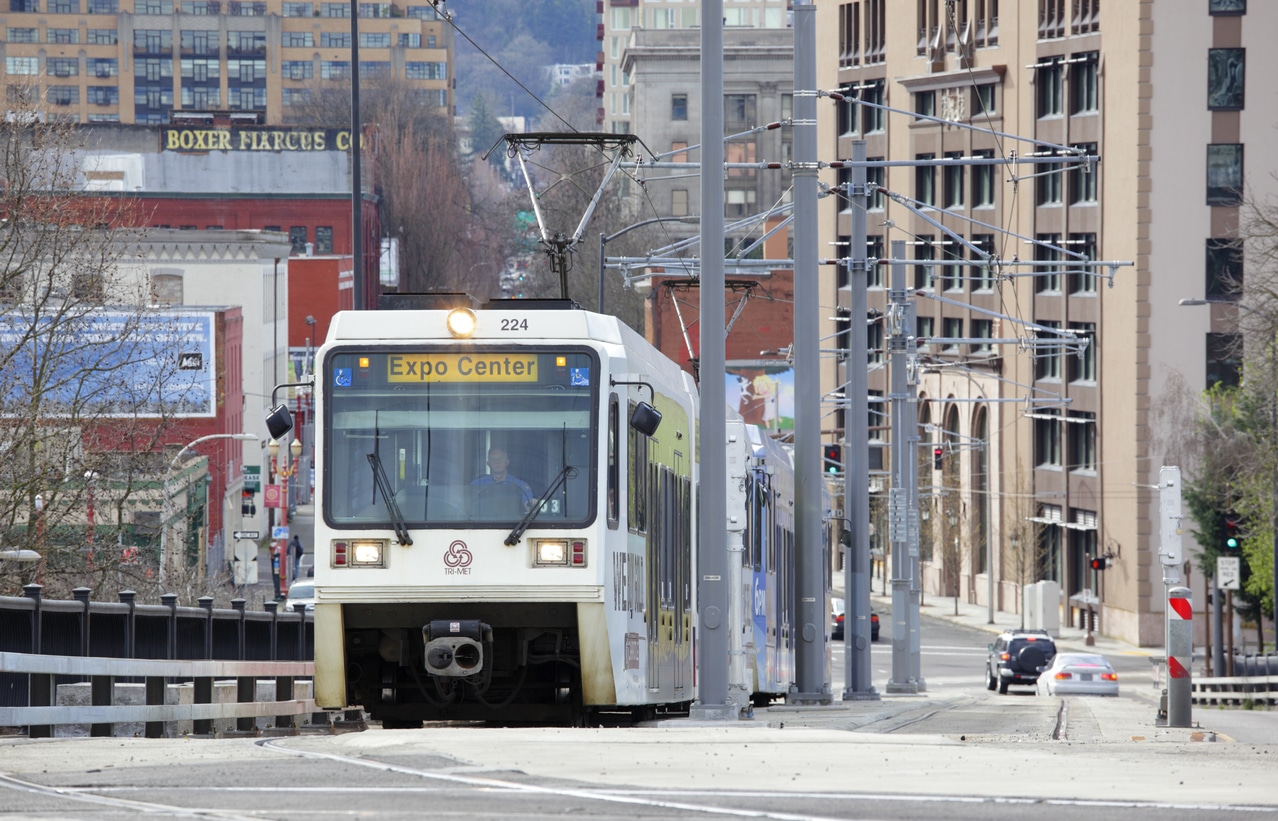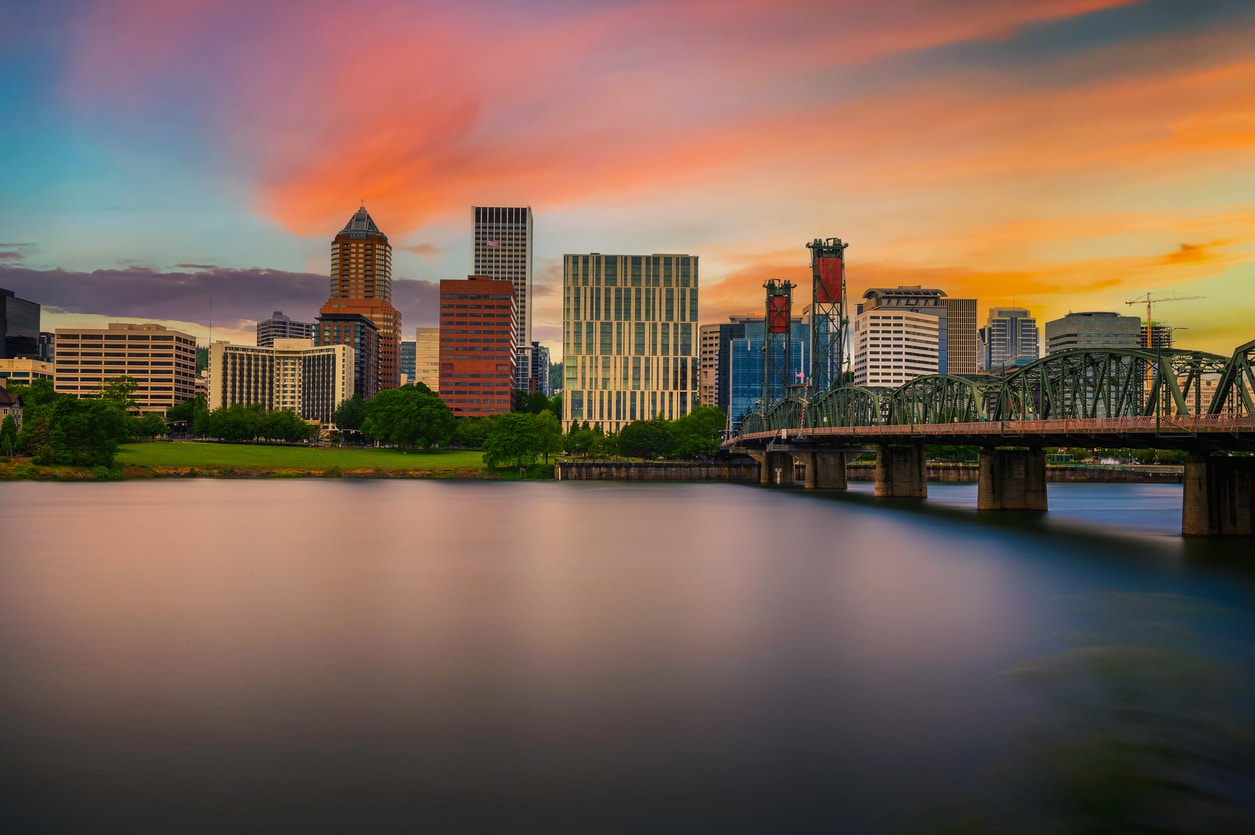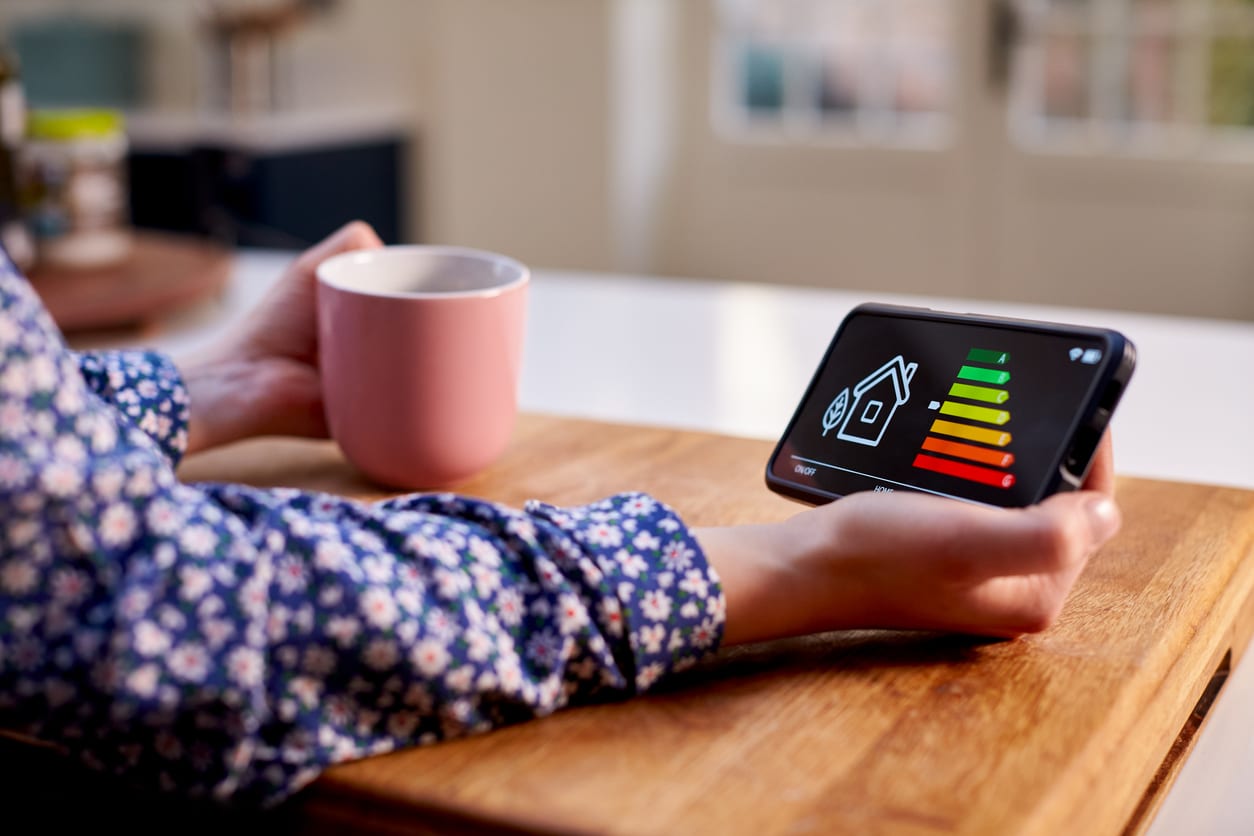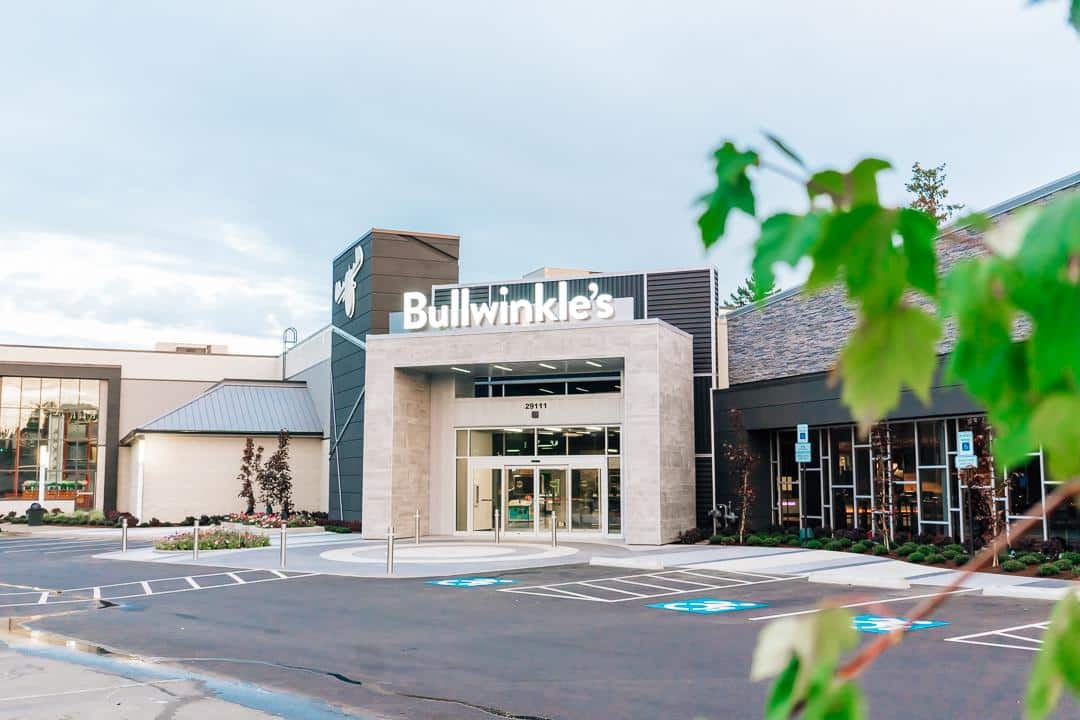Portland’s next Max Line and Car Free Neighborhoods

We all know the real estate agent saying about “location”, but there’s no location without transportation. To some, good transportation means getting to work, schools, shopping, and restaurants easily; for others, it’s about getting out of the city without a hassle.
While few can dispute the convenience of the private automobile, other forms of transportation are often faster, less expensive, and healthier for people and the planet. In Portland, car-free or car-lite lifestyles are a high priority. Walkers, bicyclists, and public transit riders have plenty of options across the city.
Portland Commute Times
If you’re looking to buy a home in Portland a short commute time is important to you, there’s some very good news from the U.S. Census. According to their 2016 data, Portland’s 325,000+ commuters are only spending an average of 26 minutes to get from their home to their work. Even better, only 67% of commuters make the trek in a car, with transit, bicycling, and walking being the next-most-popular options. As telecommuting becomes an option for more and more workers, close to 7.5% of us are staying at home to work.
Although Portland’s workforce and population are steadily growing, over the past decade not too much has changed in terms of the commuting statistics. In 2009, the first year the US Census began tracking these figures, the average time it took those workers to get to their destinations was just shy of 24 minutes.
Although it may seem to Portland residents that there are more and more cars on the road every day, the fact that the city has added 42,000 commuters since 2009 while only increasing average travel time by 2 minutes, means that city planners are doing a fairly decent job (believe it or not) encouraging folks to bike, walk or take public transit from their homes to their workplaces.
Best Portland Neighborhoods for Car-Free Lifestyles
Downtown Portland: Connected
When it comes to choosing a neighborhood for the best transportation options, downtown Portland is the obvious choice. Although the housing stock here is mostly condos and apartments, those who choose to live downtown enjoy the convenience of living in the heart of the city. The Portland Streetcar runs up and down the main corridors of the downtown blocks, which parallels the Willamette River. Or, catch a MAX light rail line to all quadrants of the city, plus Beaverton or the airport. With the new Tilikum Crossing bridge built exclusively for light rail, pedestrians and bicyclists — the largest of its kind in the United States — getting across the river without a car is easy and quiet.
Walkscore.com calls downtown Portland a “Walkers’ Paradise”; it also receives top marks for transit and bicycling because of the flat terrain and well-marked bike lanes. Nearby Pearl District, Waterfront and Goose Hollow neighborhoods also score well on the WalkScore website.
Southeast Portland: Walkable Neighborhoods
Just a hop, skip and jump away from downtown Portland is the ever-popular Southeast quadrant. This cluster of neighborhoods includes Richmond, Sellwood-Moreland, and Powellhurst-Gilbert; all are easily accessed both by car and other forms of transit. Buses travel frequently through this part of town, and cyclists enjoy connectivity across the neighborhoods’ southern border on the Springwater Trail. Within Southeast, several neighborhoods are in the top-20 WalkScore list for Portland neighborhoods, including Sunnyside, Hosford-Abernethy, and Kerns. This means that doing daily errands by foot or bike in the neighborhoods is a piece of cake, not only because the infrastructure is great, but also because the areas are mostly flat.
Those Southeast neighborhoods that can’t boast of great walkability are looking to do something about the problem. Lents is one of them, with a plan to develop a “Green Ring” that just received a $16,000 grant from the Portland Bureau of Transportation. The project will reinforce and improve current pedestrian and cycling amenities on a designated route that connects the Springwater Trail to neighborhood schools, parks and, shopping districts.
Northeast and East Portland: On its Way
Car? What car? Sure, residents of Northeast Portland neighborhoods like Overlook, Boise, and Alberta could drive to get downtown or other parts of the city, but why would they when they could just hop on a bus or light rail and be there in minutes?
It’s true that inner Northeast is well served by public transit — and most neighborhoods receive high bike and walk scores – but travel east and things aren’t quite as pretty. Far east Portland was not designed with alternative transportation in mind, but fortunately the city is working to fix that. East of the I205, the 2012 East Portland in Motion Plan is adding neighborhood greenways, sidewalks bike lanes, and multiuse paths to attempt to reduce this area’s reliance on cars.
It’s a win-win. The fewer drivers on the road, the easier things are for both those who need to use a car, and those who choose to bike, walk, or take the bus. Oh, and home values win too. According to independent real estate research conducted by both Redfin and Zillow, the more walkable the neighborhood a home is located in, the higher its value tends to be.
Southwest Portland: Next MAX Stop
For Portlanders who must commute downtown, the presence (or absence) of MAX light rail can make or break the car free lifestyle idea. Since the Orange Line reached Milwaukie, for instance, the little city has blossomed as a bedroom community to Portland. Across the river, meanwhile, Southwest Portland lacks fluid transit options and can be difficult to access even by car, with the I5 slowing to a crawl during rush hours.
Now Metro has its sights on Southwest Portland for the next MAX line. According to their website, “The transit system in Southwest is taxed, and the roads are congested and unreliable. People walking and bicycling face unsafe conditions moving within and between local communities.” Although the route wouldn’t be complete for another ten years, it does have the potential to transform the area into another best Portland neighborhood to go car-free. Stay tuned for more real estate updates from the hilly Portland suburbs!


